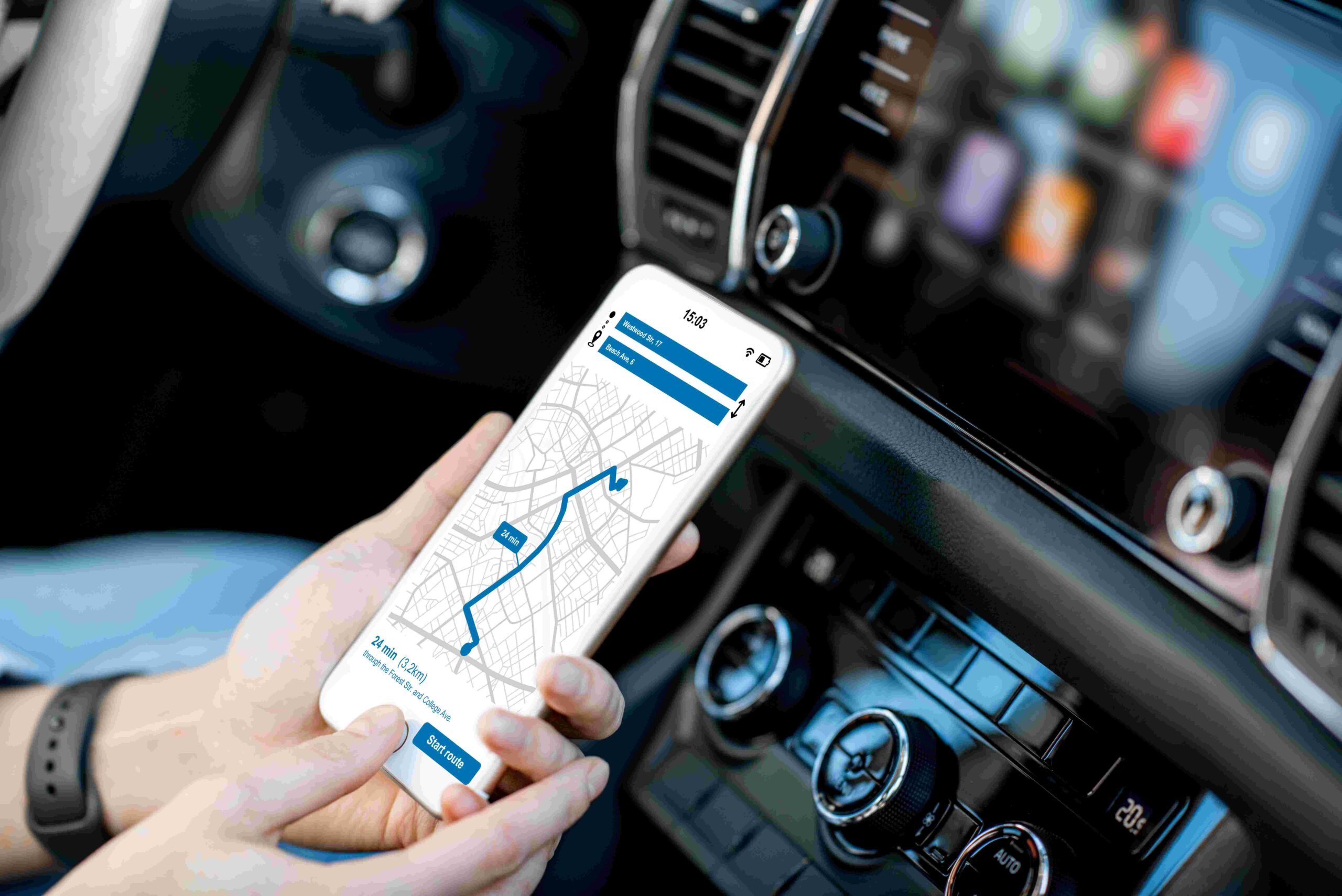Geofencing, a location-based technology, is changing the way companies interact with customers, especially ones that they know are nearby their storefronts, or service centers. Geofencing is technically defined as “GPS or RFID technology that enables geographic boundaries, enabling software to trigger a response when a mobile device enters or leaves a particular area.”
In other words, geofencing is how Grubhub and other food delivery apps know what neighborhood you’re in, so they can find the closest restaurants to you.
Geofencing allows companies to create zones around specific geographic areas, enabling them to send targeted messages, notifications, and offers to users within those boundaries. Want to alert someone driving by your store about a sale? Then a geofencing company can help you.
A few companies have emerged as industry leaders. They drive technological advancements and invest in research and think tanks. In this post, we will drive into the top geofencing companies, exploring their key pros and cons, innovations, and the impact they have on different sectors.
Depending on what platform you choose, and what you want from the platform, expect to spend $1500-$30,000 per month. Yes, that’s a big range. At SEO Design Chicago, we’ll help you choose what you need so you’re not overpaying.
Table of Contents
Apple: Pioneering Geofencing on Phones
Apple, a tech giant known for its cutting-edge tablets, phones and computers, has played a massive role in developing geofencing technology. The company’s iOS operating system has built in geofencing capabilities. Geofencing combines the IP address on a device with GPS data and information from the cellular network. This makes it easier for app developers to create location-conscious apps for iPhones and iPads. Apple has what’s called a Core Location framework that allows businesses, like yours, to set up geofences, triggering specific actions https://seodesignchicago.com/when users enter or leave designated zones. So for example, you can send a text alert if you have customers in a certain zone. If the system senses they’re leaving the zone, you can send a text or app alert saying, “Before you drive too far away, here’s a promo code to stop in your business name.”
Apple has iBeacon technology, which works with geofencing to offer precise indoor location tracking. Large stores, museums, and big event venues use iBeacon to deliver personalized content and promotions to users based on their real-time location. For example, if a user opts into alerts from a large concert venue, and the technology senses they’re near a certain booth, the user can get a text or alert. Here’s the thing. Apple is committed to user privacy, so users have to consent into geofencing and enable location tracking. Not all users do, so you have to factor that into how much you want to invest your time and money into mobile geofencing alerts through Apple.
Google LLC: Geofencing for Android Phones Combined with Location-Based Services
You can’t compare apples and oranges but you can compare Apple with Google.
Google has also been a leader in geofencing technology. But they dominate users with Android phones and devices include location-based services. The Android Location Services API helps app and web developers incorporate geofencing capabilities into their apps. Have you ever gotten an alert from a company when you’re near a location offering a deal? Were you using an Android phone? They likely used geofencing technology from Google.

Google’s geofencing solutions are widely used in all kinds of fields, including retail, marketing, and transportation. Through Google’s geolocation services, businesses can create dynamic geofences that adapt based on real-time factors such as traffic conditions or user behavior. Think about it – Google Maps knows when to tell you to take another route because there’s an accident ahead. If you have the correct settings enabled on your phone, you can get app and text alerts from nearby companies too. What’s great about Google is their extensive mapping capabilities. They “own” digital mapping, and mapping is central to geofencing.
PlotProjects: Context-Aware Notifications
PlotProjects is a different type of geofencing company. They focus on context-aware notifications. That means they go beyond a user’s location, but also trigger alerts by factors like user preferences, historical data, and real-time context to deliver timely and relevant notifications.
PlotProjects is best for industries like retail, hospitality, and events, where delivering precise and contextually relevant information is crucial. At an event, if a room reaches maximum capacity and no more attendees will be allowed in, an attendee walking towards that room will get notified, and perhaps told other sessions that still have spaces. PlotProjects can also be good for events when there are sudden weather developments.
Swirl Networks: Geofencing for Shoppers
Swirl Networks specializes in using geofencing technology to encourage shoppers to buy stuff. Sometimes, all shoppers need is a little push to put an item in a cart, stop in a store, or stop en route to their main location. Swirl allows retailers to create location-based alerts (whether through app notifications, texts or emails) that include targeted offers, promotions, and product information to shoppers within specific geographic areas. Swirl’s focus on the shopping sector demonstrates how geofencing can be a game-changer for brick and mortar businesses aiming to capture foot traffic and boost their profits.
One of Swirl’s best features is the ability to locate where a person is browsing within a brick and mortar store. Businesses can use Swirl’s analytics to gain insights into customer behavior. Does someone buy something in aisle 12? If so, the next time they’re in that aisle Swirl can perhaps remind them to refill whatever they purchased last time.
The Pros of Geofencing
- Geofencing makes it easier to reach customers in specific areas near your stores or near your customers.
- Enhance local sales.
- Increase engagement.
- Helps increase brand awareness.
- Helps you stand out from your competitors.
- Makes use of other technologies that already exist, like mapping and location data.
The Cons of Geofencing
- Cost (although it may come down over time)
- Maintenance.
- Unfamiliarity.
- Potential annoyance to some customers.
How Much Does Geofencing Cost?
This isn’t an easy question to answer because it all depends on how precise you want the location of the user to be, what types of messages you want the user to get, if you want to create the messages or have others do it, and what your management needs are.
Geofencing usually falls underneath the category of advertising for most companies, so you’d likely consider any costs part of your ad budget.
Often, prices are divided into CPM (cost per mile) or CPV (cost per visit).
CPM pricing can range anywhere between $3.50-$15 per alert for mobile campaigns.
CPV is a buying model in which businesses only pay for ads that result in a store visit. CPV pricing is hard to estimate because the vendor will want a way to prove what drove a purchase.
How Can a Digital Marketing Agency Help When It Comes to Geofencing?
We can help you pick the best geofencing company for your needs, and the best model for paying for geofencing technology. We’re also honest – if your company isn’t ready for geofencing, we won’t talk you into wasting money.
We can help you craft the messages that go out, and most importantly, we help you measure if geofencing is working. If it’s not paying off, you don’t want to keep investing in it.

That Said, You Can’t Ignore Geofencing Forever
Geofencing continues to shape the way businesses interact with their customers. Users often enable location tracking and are occasionally annoyed by alerts, but then at other times, see the benefits. Geofencing is definitely a unique way to offer personalized engagement, marketing, and analytics. Not every company does it, nor should every company.
The companies that do stand out. Hopefully, they stand out in a good way, not an annoying way.
The geofencing companies mentioned in this post have played instrumental roles in driving innovation and research in this technology across multiple industries. From retail and hospitality to delivery, these companies showcase the adaptability and impact of geofencing in the modern digital business landscape.
The price can seem overwhelming but here’s one free tip. The competition among geofencing companies will likely spur further developments, making the technology easier to mimic and cheaper for companies to buy.
Think of geofencing like photo editing. Adobe used to be the only game in town. It was expensive and hard to use. Now there’s Canva, a very powerful photo, video and design platform that has an amazingly powerful free plan. For not too much more, their pro version is AMAZING.
Reach out to us to discuss geofencing, or other issues ranging from SEO to website migration.



Contact Us Today!